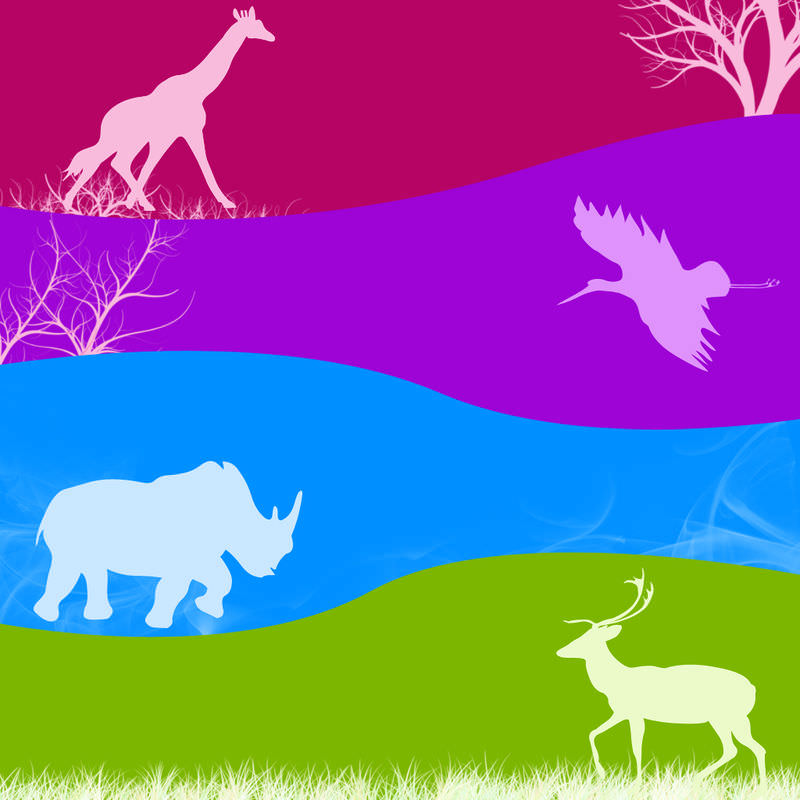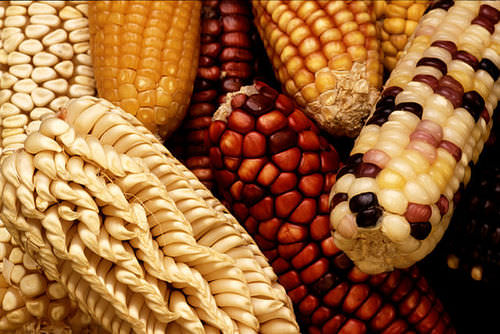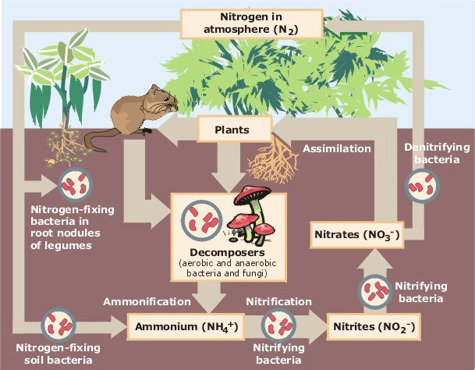生物多样性的重要性 -- -- 先进
章节大纲
-
Why is important?
::为什么重要?Think about how many exist. Most likely well over 5 million. Now think about how much information about those species we do not yet understand. We do not know what we can learn from them.
::想想有多少种物种存在。 很可能超过500万。 现在想想我们还不了解的物种的信息数量。 我们不知道我们能从中学到什么。Why is Biodiversity Important? What are We Losing?
::为什么生物多样性重要?我们失去了什么?Why should humans care if biodiversity declines? Does it matter that we have 170 fewer , or that we are losing thousands of species each year, when the Earth holds millions of other species, and life has been through extinction before? The answer is a definitive yes! It matters to us even if we consider only the economic and spiritual benefits to humans. It matters to us because we do not even understand the myraid of indirect benefits – now recognized as services - that we reap from other species. And, of course, it matters to other species as well.
::人类为什么要关心生物多样性的下降呢?我们每年少了170个物种,还是每年损失成千上万物种,地球拥有数百万其他物种,生命曾经灭绝?答案是绝对肯定的。 即使我们只考虑人类的经济和精神利益,也对我们很重要。这对我们很重要,因为我们甚至不理解我们从其他物种获得的间接利益 — — 现已被公认为服务 — — 的记忆。 当然,对其它物种也很重要。Direct Economic Benefits of Biodiversity
::生物多样性的直接经济利益-
Food
Supply
:
Monocultures
(large-scale cultivation of single varieties of single species) are extremely vulnerable to disease. A
caused the infamous Irish potato famine where potatoes had been bred from a single Incan variety. As recently as 1970, blight swept the corn belt where 80% of maize grown in the U.S. was a single type. According to the Food and Agricultural Organization of the United Nations, humans currently cultivate only 150 plant species, and just four provide over half of the food we eat. Just 15
species make up over 90% of our livestock.
::食品供应:单产业(大规模种植单一品种的单一物种)极易受到疾病的侵袭。一种疾病造成了臭名昭著的爱尔兰土豆饥荒,因为土豆是从一个因坎品种中培育出来的。最近到1970年,玉米带被烧红了,美国80%的玉米种植是单一类型。据联合国粮食及农业组织(粮农组织)统计,人类目前只种植150种植物,只有4种提供了我们所吃食物的一半以上。只有15种物种占我们牲畜的90%以上。
Potential for hybridization requires a diverse “bank” of wild, native species. Contemporary breeders increase genetic diversity by hybridizing crop species with wild species adapted to local climate and disease ( Figure ).
::现代育种者通过将作物物种与适合当地气候和疾病的野性物种混合,增加遗传多样性(图)。Wild varieties of domesticated crops, such as this unusually shaped Latin American maize, hold the potential to enhance productivity, nutritional value, adaptation to local climates, and resistance to local diseases through hybridization. Loss of biodiversity limits our ability to increase the genetic diversity of crops. -
Clothing, Shelter, and Other Products
: As many as 40,000 species of plants, animals, and
provide us with many varied types of clothing, shelter and other products. These include timber, skins and furs, fibers, fragrances, papers, silks, dyes, poisons, adhesives, rubber, resins, rubber, and more.
::服装、住所和其他产品:多达40,000种植物、动物,为我们提供多种种类的服装、住所和其他产品,包括木材、皮革和毛皮、纤维、香料、纸张、丝绸、染料、毒药、粘合剂、橡胶、树脂、橡胶等等。 -
Energy
: In addition to these raw materials for industry, we use animals for energy and transportation, and
biomass
for heat and other fuels. Moreover, hydroelectric power depends on ecosystem structure: Chinese scientists calculated that the economic benefits of maintaining forest vegetation in the Yangtze River watershed “produced” more than twice the economic value of timber (had it been harvested) in annual power output.
::能源:除了这些工业原材料之外,我们还利用动物作为能源和运输工具,以及生物量作为热能和其他燃料。 此外,水力发电取决于生态系统结构:中国科学家计算出,维持长江流域森林植被的经济效益是木材年发电量(如果伐木的话)“生产的”两倍多。 -
Medicine:
Since the first microorganisms competed for food, evolution has been producing chemicals for “warfare” and “defense” in
, fungi, plants, and animals. According the American Museum of Natural History Center for Biodiversity
(AMNH-CBC), 57% of the most important prescription
drugs
come from nature, yet only a fraction of species with medicinal potential have been studied.
::医学:自从第一次微生物为食物而竞争以来,进化过程一直在生产“战争”和“防卫”化学品,用于菌类、植物和动物的“战争”和“防卫 ” 。 根据美国自然历史博物馆生物多样性中心(AMNH-CBC)的数据,57%最重要的处方药来自自然,但只有一小部分具有医药潜力的物种得到了研究。 -
Medical Models:
Unique features of certain species have opened windows into how life works. For example, the Atlantic squid’s giant
axon
revealed the basics of neurophysiology, and the horseshoe crab’s
optic nerve
and photoreceptors taught us how
works. Other animals serve as disease models; as far as we know, other than humans, only armadillos suffer from leprosy, and only sea squirts form
kidney stones
.
::医学模型:某些物种的独特特征为生命运作打开了窗口。 比如,大西洋鱿鱼的巨型斧头揭示了神经生理学的基本原理,马蹄蟹的光学神经和光受体教导了我们如何工作。 其他动物作为疾病模型发挥作用;据我们所知,除了人类之外,只有腹膜受麻风病影响,只有海螺成为肾结石。 -
Efficient Designs: Inspiration for Technology
:
Biomimicry
, also known as biomimetics or
bionics
, uses
organisms
for engineering inspiration and human innovation. Rattlesnake heat-sensing pits, for example, suggested infrared sensors. Zimbabwe’s Eastgate Centre
Figure
incorporates air-
conditioning
principles from termite mounds. The 2006 Mercedes-Benz
Bionic
employs the body shape of the yellow box
to combine high internal volume and efficient aerodynamics. Biomimetics professor Julian Vincent estimates that only 10% of current technology employs the highly efficient biological designs crafted by evolution and
. Loss of biodiversity can be viewed as the loss of millions of years of evolutionary wisdom.
::高效设计:技术的灵感:生物模仿,又称生物工程或生物体,利用生物体进行工程灵感和人类创新。例如,Rattlesnake热感测坑建议红外感应器。津巴布韦的东门中心图中包含了白蚁丘的空调原则。2006年奔驰-奔驰Bionic用黄盒的体形将大量的内部体积和高效的空气动力结合起来。 生物心理学教授朱利安·文森特估计,目前只有10%的技术使用由进化和进化形成的高效生物设计。 生物多样性的丧失可以被视为数百万年进化智慧的丧失。
Bionics, or biomimicry, engineers structures based on biological designs made efficient by millions of years of evolution and natural selection. Above: The air-conditioning efficiency of a termite mound (left) inspired the design of the Eastgate Centre in Zimbabwe (right), which requires just 10% of the energy needed for conventional building of the same size. Below: The rigid exoskeleton and low-drag body shape of the tropical yellow box-fish (left) inspired the 2006 Mercedes-Benz Bionic (right), which combines large internal volume with optimal aerodynamics. -
Warnings of Toxins and Other Ecosystem Disruptions
: If you know how miners use canaries to detect poisonous gases underground, you will understand how widespread extirpation of peregrine falcons warned us about the dangers of the pesticide DDT and
concentration of toxins.
::毒素和其他生态系统破坏的警告:如果你知道矿工如何利用金丝雀探测地下的有毒气体,你就会知道游鹰的大规模外溢如何提醒我们注意滴滴涕农药和毒素浓度的危险。
Indirect Benefits of Biodiversity: Ecosystem Services
::生物多样性的间接惠益:生态系统服务-
Increasing Ecosystem Productivity
: Ecologist David Tilman compared grassland plots to show that increasing
species diversity
increased overall productivity (yield). Different plants utilize different resources, so a variety of plants may more completely use resources within an area. As noted above, diversity also reduces system vulnerability to pests and disease.
::提高生态系统生产力:生态学家David Tilman比较了草原面积,以表明物种多样性的增加提高了总体生产力(Yield ) 。 不同的植物利用不同的资源,因此不同的植物可以更全面地利用一个地区内的资源。 如上所述,多样性还降低了系统对病虫害的脆弱性。
-
Increasing Ecosystem Stability
: Tilman observed his grassland plots through several cycles of drought and documented a similar relationship between biodiversity and stability. Plots which were more diverse were more resistant to drought and later recovered more completely. Reducing ecosystem vulnerability to pests and disease may also be a factor in the relationship between diversity and stability. As you have learned before, diversity among individuals within a species increases the chance that at least some will survive environmental change; similarly, diversity among species within an ecosystem increases the chance that at least some species will survive environmental change.
::生态系统日益稳定:蒂尔曼通过几个干旱周期观察了他的草地,并记录了生物多样性与稳定之间的类似关系。更多样化的草地更能抵御干旱,后来更能完全恢复。降低生态系统对虫害和疾病的脆弱程度也可能是多样性与稳定之间关系的一个因素。正如你们以前所了解的那样,物种中个人的多样性增加了至少某些物种在环境变化中生存下去的机会;同样,生态系统中物种的多样性也增加了至少某些物种在环境变化中生存下去的机会。
-
Maintaining the
Atmosphere
: As you learned in the chapters on
and
respiration
, plants and
produce the O
2
which makes up 20% of the atmosphere essential to
aerobic
organisms, and remove CO
2
produced by respiration and burning
fossil fuels
. As Joseph Priestley expressed this service, plants “restore the air” which has been “injured by the burning of candles” or “infested with animal respiration.” O
2
is also critical to life because it helps to maintain the
ozone
shield, protecting life from dangerous Ultra-Violet radiation.
::保持大气:正如你在关于和呼吸的章节中所学到的,植物和生产氧,它构成对有氧有机体至关重要的大气的20%,并去除呼吸和燃烧化石燃料产生的二氧化碳。 正如约瑟夫·皮斯利表达的,植物“恢复空气 ” , 它“因蜡烛燃烧而受伤 ” 或“充斥动物呼吸 ” 。 O2对于生命也至关重要,因为它有助于保持臭氧屏蔽,保护生命免受危险的超紫外线辐射。 -
Maintaining Soils
:
Soil
microorganisms maintain
nutrients
in complex but critical chemical pathways. Vegetation and litter prevent erosion of soils which require thousands of years to form. Estimates suggest that erosion destroys as many as 3 million hectares of cropland annually, and that as much as one-fifth of the world’s cropland is “desertified” through salination, acidification, or compacting.
::保持土壤:土壤微生物在复杂但关键的化学途径中保持营养。 植被和垃圾防止土壤流失,土壤需要数千年才能形成。 据估计,土壤侵蚀每年摧毁多达300万公顷的耕地,世界上多达五分之一的耕地通过盐碱化、酸化或压缩“荒漠化 ” 。 -
Maintaining
Quality
: Water treatment plants rely in large part on microorganisms for water purification, and natural systems do the same. In nature,
wetland
, waterway, and watershed root systems combine with soil adsorption and filtration to accomplish water purification. When New York City decided to restore the Catskill watershed, their $1-1.5 billion investment in “natural capital” contrasted favorably with the $6-8 billion initial cost and $300 million annual operating cost of a new treatment plant.
::保持水质:水处理厂在很大程度上依靠微生物净水,自然系统也是如此。 在自然界,湿地、水道和流域根基系统与土壤吸收和过滤相结合,以实现净水。 当纽约市决定恢复卡特斯基流域时,它们对“自然资本”的投资为10-15亿美元,而新处理厂的初始成本为60-80亿美元,每年运营成本为3亿美元。 -
“Fixing” Nitrogen
: One of the most amazing aspects of biological systems on earth is their absolute need for nitrogen – to build the
and
upon which life depends – and their nearly universal dependence on microorganisms to “fix” atmospheric N
2
gas and recycle the nitrogen of waste and death (
Figure
). Only after the bacterial “service” of processing nitrogen is it available in usable chemical form to plants, and through them, to animals.
::“固定”氮:地球上生物系统最惊人的一个方面是其对氮的绝对需要 — — 建立生命赖以生存和赖以生存 — — 以及几乎普遍依赖微生物来“固定”大气N2气体和回收废物和死亡氮(图 ) 。 只有在加工氮的细菌“服务 ” 之后,植物和动物才能获得可用化学形式的氮。
Nitrogen cycle -
Nutrient Recycling and Waste Disposal
: Bacteria and nitrogen are not the only contributors to the waste management services of ecosystems. Fungi,
, and
scavengers
help to decompose waste and dead organisms so that new life can reuse the available nutrients.
::养分再循环和废物处置:细菌和氮并不是生态系统废物管理服务的唯一贡献者。 蘑菇,以及拾荒者帮助将废物和死亡生物分解,以便新的生命能够再利用现有的养分。
-
Pollination
: The list of biotic
pollinators
, essential for
in many plants, is long including not only
such as wasps, bees, ants, beetles, moths, butterflies, and flies, but also
fruit
bats and
such as hummingbirds, sunbirds, spiderhunters, and honeyeaters. Although U.S. crops have relied on commercial honeybees (which are “migrated” to keep pace with maturing crops!), native pollinators in nearby forests or wild grasslands have been shown to improve the productivity of apples or almonds by 20%. The American Institute of Biological Sciences estimates that native insect pollination is worth $3.1 billion annually. Current alarm over honeybee colony collapse highlights the importance of biodiversity to the ecosystem service of pollination.
::polination:对于许多植物至关重要的生物授粉者名单很长,不仅包括黄蜂、蜜蜂、蚂蚁、甲虫、蛾类、蝴蝶和苍蝇,而且包括水果蝙蝠和蜂鸟、太阳鸟、蜘蛛猎户和蜂蜜动物。 虽然美国作物依赖商业蜜蜂(它们“迁移”以跟上成熟作物的步伐 ) , 但附近的森林或野草原的本地授粉者已证明可以提高苹果或杏仁的生产力20%。 美国生物科学研究所估计,本地昆虫授粉每年价值31亿美元。 目前,对蜂群崩溃的警钟凸显了生物多样性对授粉生态系统服务的重要性。
-
Pest and Disease Control
: According to the AMNH-CBC, farmers spend $25 billion annually on pesticides, while
predators
in natural ecosystems contribute 5 to 10 times that value in pest control. Costs associated with the use of chemical pesticides (such as water pollution) add to the value of natural pest control. Natural enemies are adapted to local environments and local pests, and do not threaten each other’s survival (or ours!) as do broad-spectrum chemical pesticides. Preservation of natural enemies is associated with preservation of plant diversity, as well. Disrupted ecosystems can lead to increasing problems with disease. In Africa, deforestation has led to erosion and flooding, with consequent increases in mosquitoes and
malaria
.
::虫害和疾病控制:根据AMNH-CBC,农民每年花250亿美元用于杀虫剂,而自然生态系统中的食肉动物则占虫害防治价值的5到10倍。 使用化学杀虫剂(如水污染)的成本增加了自然虫害防治的价值。 自然敌人适应当地环境和当地病虫害,不会像广泛种类的化学杀虫剂那样威胁彼此的生存(或我们! ) 。 保护自然敌人与保护植物多样性有关,破坏生态系统会导致疾病问题增加。 在非洲,森林砍伐导致了侵蚀和洪水,随之而来的蚊子和疟疾也随之增加。
Aesthetic Benefits of Biodiversity
::生物多样性的审美效益-
Cultural, Intellectual, and Spiritual Inspiration
: Music, art, poetry, dance, mythology, and cuisine all reflect and depend on the living species with whom we share the Earth. Our cultures reflect local and regional variations, and as such, biodiversity underlies our very identities. The beauty and tranquility of living ecosystems have inspired environmentalists (Rachel Carson, Aldo Leopold), spiritualists (Thomas Berry), and writers such as (Barry Lopez) throughout history. Recently, the increasing distance of human
society
from the natural world has raised concerns about our psychological and emotional health; E.O. Wilson has proposed that
biophilia
(love of the living world) is an increasingly ignored part of our human psyche, and Richard Louv believes that too many of our children suffer from “nature deficit disorder” caused by our increasing alienation from nature.
::文化、知识和精神灵感:音乐、艺术、诗歌、舞蹈、神话和烹饪都反映并依赖我们与地球共享的活生物种。我们的文化反映了地方和地区差异,因此生物多样性是我们特性的基础。活生生生态系统的美丽和宁静激励了环境学家(Rachel Carson, Aldo Leopold ) 、 精神学家(Thomas Berry ) 和作家(Barry Lopez ) , 在整个历史中。 最近,人类社会与自然世界日益距离越来越远,引起了人们对我们心理和情感健康的担忧;E.O. Wilson提出,生物哲学(爱活生世界)日益成为我们人类心理中被忽视的一部分,Richard Louv认为,我们太多的儿童由于我们与自然的日益疏远而患有“自然缺失症 ” 。
-
Recreational Experiences
: Many people choose to use vacation and recreation time to explore natural ecosystems. Outdoor recreational activities – many of which are increasing in popularity - include hunting, fishing, hiking, camping, bird-, butterfly- and whale- watching, gardening, diving, and photography. Indoor hobbies such as aquariums also celebrate biodiversity. For Costa Rica, Ecuador, Nepal, Kenya, Madagascar, and Antarctica, ecotourism makes up a significant percentage of the gross national product. Ideally, ecotourism involves minimal environmental impact, conservation of bio- and cultural diversity, and employment of indigenous peoples.
::娱乐经验:许多人选择利用休假和娱乐时间探索自然生态系统。 户外娱乐活动 — — 其中许多越来越受欢迎 — — 包括狩猎、捕鱼、登山、露营、观赏鸟、蝴蝶和鲸鱼、园艺、潜水和摄影。 室内活动如水族馆也庆祝生物多样性。 在哥斯达黎加、厄瓜多尔、尼泊尔、肯尼亚、马达加斯加和南极洲,生态旅游占国民总产值的很大比例。 理想的情况是,生态旅游涉及最小的环境影响、生物和文化多样性的保护以及土著人民的就业。
Political and Social Benefits of Biodiversity
::生物多样性的政治和社会利益Some analysts relate biodiversity to political and social stability. Unequal access to food, clothing, water, and shelter provided by diverse ecosystems threatens social equity and stability. Land ownership and land use practices which threaten biodiversity often marginalize poorer people, forcing them into more ecologically sensitive areas and occupations. Poverty, famine, displacement, and migrations are problems related to loss of biodiversity which have already led to billions of dollars in relief costs and significant local armed conflict.
::一些分析家将生物多样性与政治和社会稳定联系起来,不同生态系统提供的食物、衣着、水和住所的不平等,威胁到社会公平和稳定;土地所有制和土地使用做法威胁着生物多样性,往往使穷人边缘化,迫使他们进入生态敏感程度更高的地区和职业;贫穷、饥荒、流离失所和移徙是与生物多样性丧失有关的问题,已经导致数十亿美元的救济费用和严重的地方武装冲突。Intrinsic Value of Biodiversity
::生物多样性的内在价值Many people value biodiversity for its inherent worth, believing that the existence of such a variety of genes , species, and ecosystems is reason enough for our respect. Intrinsic value goes beyond economic, aesthetic, environmental, and political benefits. For many people, intrinsic value alone imposes great responsibility on us to monitor our actions in order to avoid destroying the diversity of life.
::许多人重视生物多样性的内在价值,认为存在这种种类繁多的基因、物种和生态系统就足以让我们尊重。 内在价值超越了经济、审美、环境和政治利益。 对许多人来说,仅仅内在价值就要求我们负有监督我们的行动以避免破坏生命多样性的重大责任。Why is biodiversity important? It supplies us with essential resources, raw materials, and designs which have direct economic value. It enhances the stability and productivity of ecosystems which in turn provide essential, under-appreciated services. These services, too, have great economic value, although we are only beginning to recognize their importance as we experience their loss. Biodiversity is critical for cultural identity, spiritual and intellectual inspiration, and our own re-creation. Biodiversity goes hand-in-hand with social and political stability. And for many people, biodiversity has inherent worth apart from its many benefits for us and our environment.
::为什么生物多样性很重要?它为我们提供了具有直接经济价值的基本资源、原材料和设计;它加强了生态系统的稳定性和生产力,而生态系统反过来又提供了基本的、得不到重视的服务。这些服务也具有巨大的经济价值,尽管我们刚刚开始认识到它们的重要性,因为我们正在经历它们的丧失。生物多样性对于文化特性、精神和智力的灵感以及我们自身的再创造至关重要。生物多样性与社会和政治稳定是相辅相成的。对于许多人来说,生物多样性除了对我们和环境的许多好处之外,还具有内在价值。Biodiversity is critically important for us and for the Earth, and it is declining at an unprecedented rate. What is causing current extinctions? What can we – what can YOU – do to help?
::生物多样性对我们和地球都至关重要,而且正在以前所未有的速度下降。 是什么导致了目前的灭绝? 我们有什么能帮上忙的?Summary
::摘要-
Direct economic benefits include the potential to diversify our food supply, resources for clothing,shelter, energy, and medicines, a wealth of efficient designs which could inspire new technologies, models for medical research, and an early warning system for toxicity.
::直接的经济利益包括:使我们的粮食供应多样化的潜力、衣物、住房、能源和药品资源、能够激发新技术的丰富的高效设计、医学研究模型和毒性预警系统。 -
Ecosystem services provided by biodiversity include ecosystem stability and productivity; maintaining and renewing soils, water supplies, and the atmosphere; nitrogen fixation and nutrient recycling; pollination, pest and disease control, and waste disposal.
::生物多样性提供的生态系统服务包括生态系统稳定和生产力;保持和更新土壤、供水和大气;固氮和营养循环;授粉、虫害和疾病控制以及废物处理。 -
Less tangible but equally important are the cultural, aesthetic, and spiritual values and the importance of biodiversity to many modes of recreation.
::文化、审美和精神价值以及生物多样性对多种娱乐方式的重要性等,不那么明显,但同样重要。 -
Finally, many people believe that biodiversity has intrinsic value, inherent in its existence.
::最后,许多人认为,生物多样性具有内在价值,是生物多样性存在所固有的。
Review
::回顾-
Construct a chart showing why you consider biodiversity important. Your chart should include four categories and 2-3 examples from each that you consider most critical.
::构造一个图表, 显示您为什么认为生物多样性很重要。 您的图表应该包含四个类别和2-3个例子, 每一个类别和例子都是您认为最关键的 。
-
Food
Supply
:
Monocultures
(large-scale cultivation of single varieties of single species) are extremely vulnerable to disease. A
caused the infamous Irish potato famine where potatoes had been bred from a single Incan variety. As recently as 1970, blight swept the corn belt where 80% of maize grown in the U.S. was a single type. According to the Food and Agricultural Organization of the United Nations, humans currently cultivate only 150 plant species, and just four provide over half of the food we eat. Just 15
species make up over 90% of our livestock.



